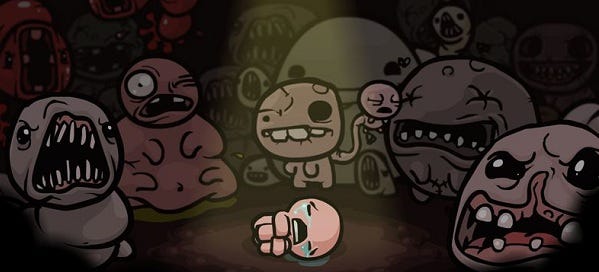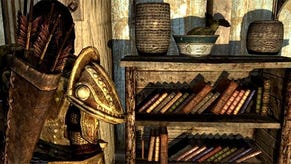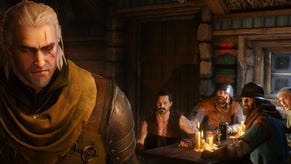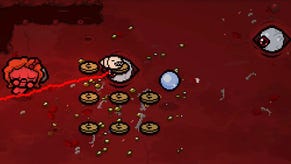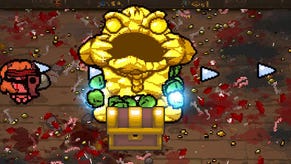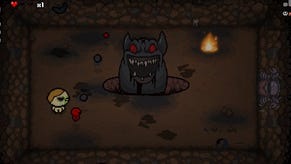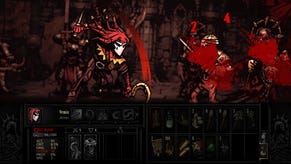Wot I Think: The Binding Of Isaac
Super Sacrificial Boy
I’ve spent hours in a basement full of demented nightmare children, using my own tears, blood and urine to fend them off. That’s a lie. I’m not just fending them off, I’m going out of my way to seek them out and to kill them in case my murderous mother’s undergarments or shoes appear when I’ve reduced every living thing in a room to blood-pudding. Then I’ll be able to put on mother’s clothes and that will make my tears all the more bitter. The other children won’t stand a chance against me then. It’s The Binding Of Isaac. Here’s Wot I Think.
I’ve seen The Binding Of Isaac described as many things: dead baby Zelda, Smash TV meets Roguelike, utterly disgusting, and a thorough and meaningful exploration of the theological and moral implications of the Abrahamic religions’ understanding of loyalty. It is most of those things, to varying degrees, but the crucial thing is that despite any potential confusion, it all clicks together and makes sense within minutes of playing. At least the mechanics make sense, as for what's actually happening and why those flies want to kill little Isaac and how those eyeless heads are levitating toward him, I don't really know about that. It's not in the source text.
There are items to collect, keys that open doors, bombs that blow things up and bosses guarding the exit to every floor. I wouldn’t strictly call it a roguelike, but we could argue about what that term means all day long. It’s definitely like a roguelike and it plays with the conventions in fun ways, particularly Isaac’s death diary which is exactly how the victim of a mad God/mother would scrawl out a post-mortem character dump. In terms of the roguelike mechanics, its interpretation of them is not dissimilar to that found in Spelunky.
As for Zelda, yes, that's in there too. The bombs are straight out of Linksville and the shopkeepers are rotten little homages, with their goods laid out in the same way, but their entrails laid out in an entirely different way. Then there's the action, which is twin stick shooter style. I played with keyboard, WASD for movement and cursor keys to shoot. The mouse can handle the shooting side of things but since Isaac can only fire in the cardinal directions, the keys do the trick just fine. It's worth noting that the options menu isn't available on the title screen, only from the pause menu in game, which is reached by pressing escape. Odd, but there you go. Everything else is bloody odd as well, so why not.
The first screen you see when you start a game has the controls written on the floor. That’s the only thing you can be certain of. There might be an exit on one side of the screen or there might be exits on all four sides. A map at the top-left shows the rooms that lead off as dull rectangles, once you enter them, they light up and any new routes are added. The map also places icons on top of the rooms so you’ll know if you’ve left items behind, either because you don’t need them yet or can’t reach them. Shopkeepers, bosses and treasure chambers are also marked; you won’t get lost because each floor is quite small, but it’s useful to know exactly where you’re going, saving on pointless backtracking.
When you enter a new room, the layout and enemies are randomly determined. There are preset designs but you won’t often come across the same rooms in the same sequence and the creatures in the room aren’t part of the design. So a room littered with rocks, hard to move around in, might contain enemies with projectile attacks on one visit but on the next you could be faced with leaping, headless that ignore the obstacles. Both present their own challenge and both would be a lot easier to kill in an empty room, where Isaac can circle around them using the space to his advantage.
Once I’d learned the attack patterns of the grotesqueries I’d find myself working out a strategy for surviving and clearing a room seconds after entering it. Even though each chamber only takes a minute or so to pass through, there is a definite tactical element and it’s enhanced by Isaac’s own changing state. I’ve entered rooms and felt myself tense as I immediately recognise that I’m not ready for what’s in there. Other times, I nod grimly and send streams of Cupid’s own piss into the faces of the slathering hunks of meat that are essentially no more than faces.
At first, Isaac is no more than a bawling, naked infant, ready for the chopping block, but as progress is made, items are discovered. Some change the nature of Isaac’s projectile, some boost his stats, others are rechargeable secondary weapons or one-time use items. Sometimes the game is kind and Isaac is quickly transformed into a winged demon, raining a deadly torrent of blood on his assailants. Other times, he never progresses much beyond the wailing nude phase. Maybe he’ll find himself with a tiny brother or sister hanging over his shoulder, in my mind alluding to Will Self’s lithopedion foetus in How The Dead Live. It’s all in the luck of the draw.
That’s the brilliance of it. Where Super Meat Boy demanded perfection, The Binding Of Isaac is all about imperfection. This is a game, after all, where one of the powerups is a coathanger, which the unwanted child hero attaches to himself in the most gruesome and (in)appropriate fashion. At times the deliberate ugliness of the theme is reduced to bloody-minded potty humour – tears are used to dissolve giant mounds of poo on a regular basis – but there’s a cleverness behind the willy-waving shock value. Pick up a wooden spoon and Isaac is covered in red welts, his speed increasing. He’s learned to run. Wear mother’s shoes and his tears become more effective. He’s learned shame.
Imperfections aren’t only thematic though, they’re built into the core of each short playthrough. There’s rarely a choice of equipment, it’s a case of doing the best with what you’re given. This means that despite the apparent simplicity of the game, the replay value is enormous. I’ve had to drag myself away from it just to write this because I know that if I play for another hour, not only will I have had a very enjoyable hour, I’ll also have more to say. Maybe I’ll accidentally discover a new favourite combination of powerups or start to despise a certain enemy type more than any other. Tomorrow I might advocate using bombs to take out bosses, lessening the risk of losing heart to them, but today I keep my bombs to blow up rocks, to reach concealed chests, to find the crown of thorns that will make me unstoppable.
I’ve killed the final boss a few times now, the whole thing can be finished in half an hour, but I haven’t completed it. Nowhere near. I don’t even know what that would mean. Maybe I could collect every item and every achievement, which isn’t something I’m normally interested in doing. I am here though, partly because I want to see everything, but also because I want to keep playing. I don’t need achievements to bait me into the basement but the few that will alter my playstyle are tempting. Those mostly relate to the unlockable characters. To play as Cain, I need to collect 50 coins on a single playthrough. In my experience, that means I’ll need quite a bit of luck but I’ll also need to sacrifice keys and bombs to pick up money instead of items, and I won’t be able to spend the money. At least I don’t think so; I think I need to have all 50 coins at the same time.
There’s no real documentation to help out with the confusions that remain but discovery is all part of the fun. Pills, like potions in a roguelike, are intentionally opaque in their purpose. You just have to make baby Isaac swallow them down and hope for the best. Sometimes he recovers his health, other times he pees himself and looks horribly sad. He ALWAYS looks horribly sad, but somehow when you’re feeding him drugs he manages to look even sadder. Scrolls are replaced by tarot cards, which always do the same thing, though they don’t tell you what that is. You have to use them and then try to work out what the hell happened, which isn’t always as easy as you might think.
The only problem I have with The Binding Of Isaac right now is that I’m still discovering things and I don’t want that to end. It’s not the only part of the game that’s enjoyable, the actual run and gun (lurch and weep) mechanic is solid and challenging, but more than anything I love patching new Isaacs together. The fact that everything he collects is actually shown, in combination, is brilliant. Collecting a weird powerup and then seeing how it manifests on the character is satisfying, particularly given the wit and emotional disturbance that have gone into the design. I’ve been playing for hours now and I’m still finding rooms whose purpose I don’t fully understand and I haven’t killed all the sins on a single playthrough, or every boss in the depths. There is a lot to do but I still know, already, that I’m going to want more, although I mean that in a wholly positive way.
For the meagre sum of £3.59 there’s an embarrassing amount of entertainment here. In many ways, it’s a small game. There’s never more than one-screen in play for one thing but every screen has something to offer, whether an ecstatic discovery or a terrible way to die. That’s fundamentally all I ask from a game – fill my screen with something interactive and interesting. It’s a very rare moment when Isaac isn’t doing that. As I was playing, I kept thinking how unlikely it was that this thing exists, in all its deliberate depravity and simple pleasures. I’m extremely glad that it does.
